The question “where is Mona Lisa?” is frequently asked by art enthusiasts and tourists alike. The world’s most famous painting, Leonardo da Vinci’s Mona Lisa, resides in the Louvre Museum, specifically within its grandest room, the Salle des États. This expansive hall not only provides ample space for the countless admirers of the Mona Lisa but also showcases other significant Venetian artworks, notably The Wedding Feast at Cana by Veronese.
The Salle des États: A Room Fit for an Icon
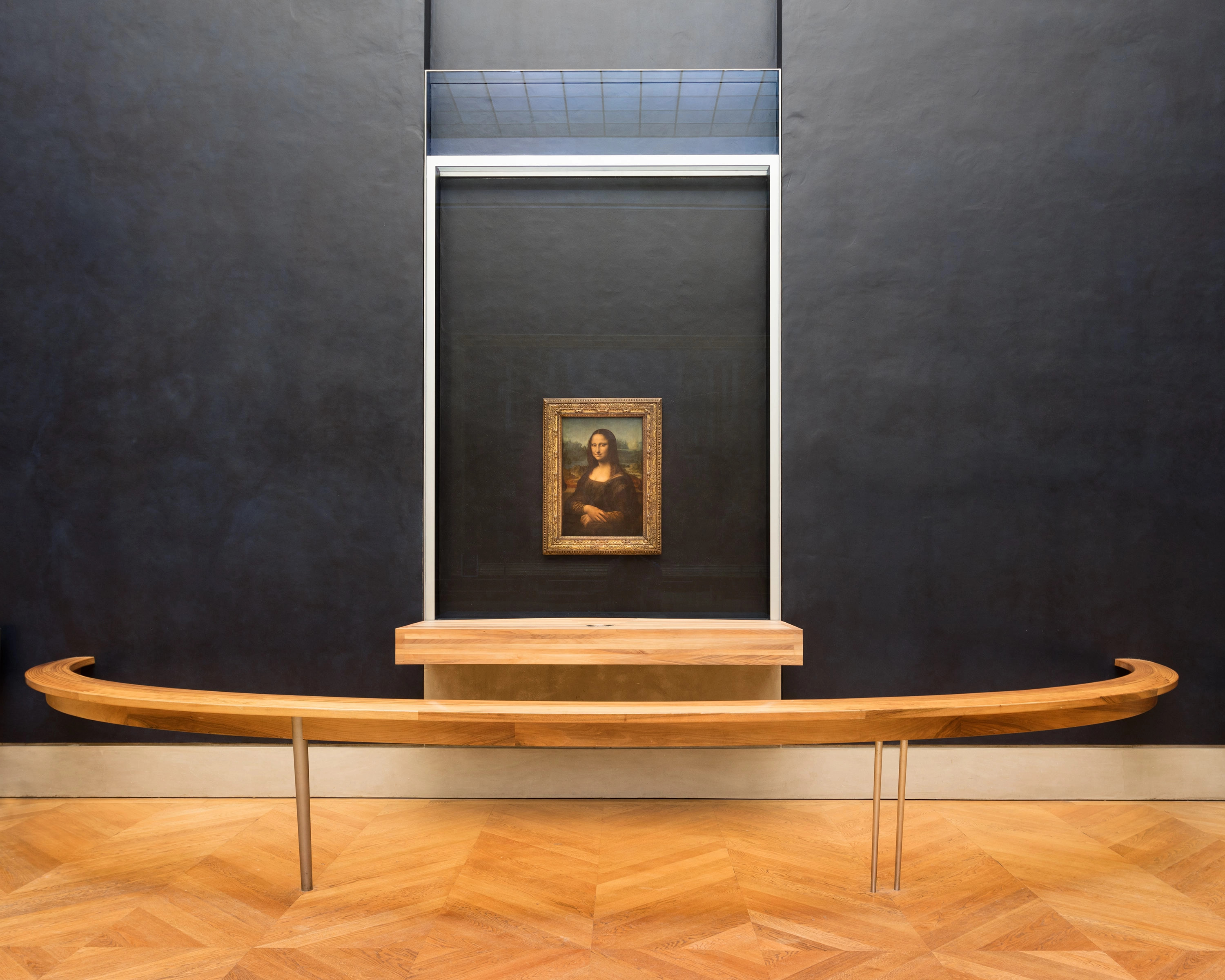 Portrait of Lisa Gherardini, known as the Mona Lisa in the Salle des États Room 711, Denon wing, Level 1
Portrait of Lisa Gherardini, known as the Mona Lisa in the Salle des États Room 711, Denon wing, Level 1
To provide an appropriate setting for a global icon, the Louvre Museum designated the Salle des États as the Mona Lisa‘s home in 1966. As the largest room in the palace, it was deemed a fitting space to display Leonardo da Vinci’s masterpiece.
The Mona Lisa‘s captivating and enigmatic smile has intrigued viewers for centuries. Among her earliest admirers was King François I, who, recognizing Leonardo da Vinci’s genius, invited him to France. In 1518, the King acquired the painting, marking its entry into the French royal collections, which eventually formed the foundation of the Louvre Museum’s holdings after the French Revolution.
Since 2005, the Mona Lisa has been presented in a secure, climate-controlled glass case, positioned centrally within the Salle des États. This specialized display serves a dual purpose: to safeguard the invaluable artwork and to meet stringent conservation requirements. Painted on poplar wood, rather than canvas, the panel has warped over time, resulting in a visible crack. Maintaining a stable temperature and humidity within the protective case is crucial to prevent further deterioration of the Mona Lisa.
Unveiling the Mona Lisa: Facts and Fascination
Mona Lisa: More Than Just a Smile
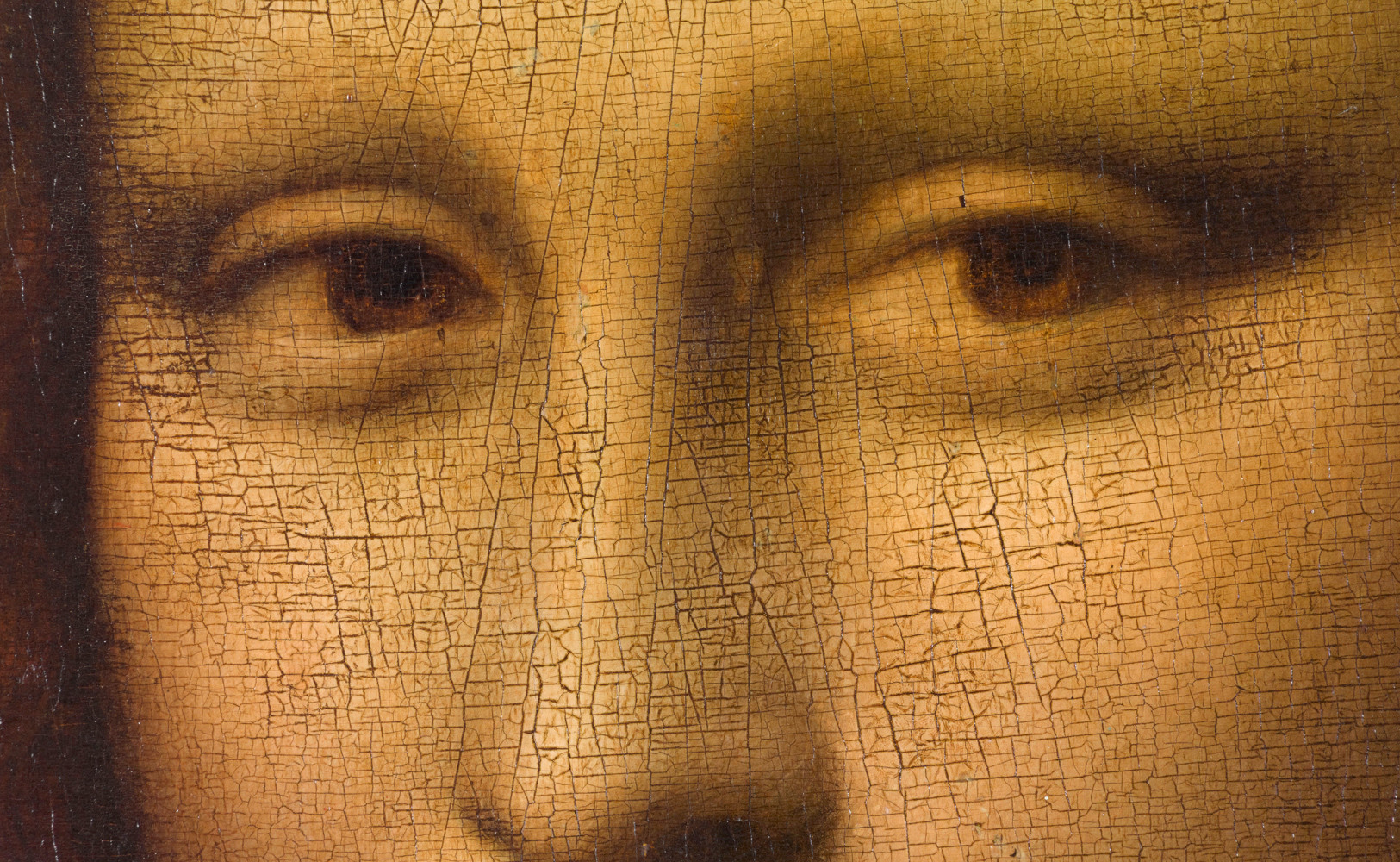 Leonardo da Vinci, Portrait of Lisa Gherardini, Wife of Francesco del Giocondo, known as the Mona Lisa Room 711 (Salle des États), Denon wing, Level 1
Leonardo da Vinci, Portrait of Lisa Gherardini, Wife of Francesco del Giocondo, known as the Mona Lisa Room 711 (Salle des États), Denon wing, Level 1
The Mona Lisa is arguably the most recognized portrait globally, depicting Lisa Gherardini, the wife of Florentine silk merchant Francesco del Giocondo. This explains her Italian name, La Gioconda, and French equivalent, La Joconde. Set against a hazy landscape, Lisa Gherardini’s direct gaze and famed enigmatic smile captivate viewers. Leonardo da Vinci’s mastery is further evident in his sfumato technique. This method employs layers of glaze to create a smoky, soft effect, with delicate contours and subtle contrasts. Leonardo masterfully captured the sitter in a natural, turning pose, imbuing the portrait with a sense of life and dynamism.
The Infamous Theft of the Mona Lisa
 The Louvre odyssey
The Louvre odyssey
On August 21, 1911, the Louvre Museum was thrown into turmoil: the Mona Lisa had vanished. News of the theft spread rapidly, igniting global sensation. Despite substantial rewards offered for its recovery, the painting remained missing for over two years. Eventually, Vincenzo Peruggia, an Italian glazier who had previously worked at the Louvre, attempted to sell the Mona Lisa to an art dealer in Italy. The dealer promptly alerted authorities, leading to the painting’s recovery and Peruggia’s arrest. This audacious theft only amplified the Mona Lisa‘s fame and solidified its legendary status.
A New Blue Hue in a Historic Setting
In 2019, the Salle des États underwent a significant renovation, with its walls being repainted in a deep midnight blue. This new color scheme was intentionally chosen to enhance the vibrancy of the Venetian masterpieces displayed in the room, creating a striking contrast with their rich reds, yellows, oranges, and greens.
The Salle des États itself boasts a rich history. Designed by architect Hector Lefuel, it was constructed between 1855 and 1857. During the Second French Empire, under Napoleon III, the room served as a venue for major legislative sessions. Napoleon III commissioned lavish painted decorations to celebrate the Empire’s grandeur. Following the fall of the Empire in 1870, the space was integrated into the Louvre Museum and initially used to exhibit 19th-century French paintings. Later, architect Edmond Guillaume adapted the room for its museum function. Windows were sealed to maximize wall space for artworks, and a glass ceiling was installed to introduce natural light from above, minimizing reflections on the paintings. After World War II, Venetian paintings replaced the French artworks, establishing the Salle des États as the primary showcase for these Italian masters.
Venetian Painting: A Symphony of Color
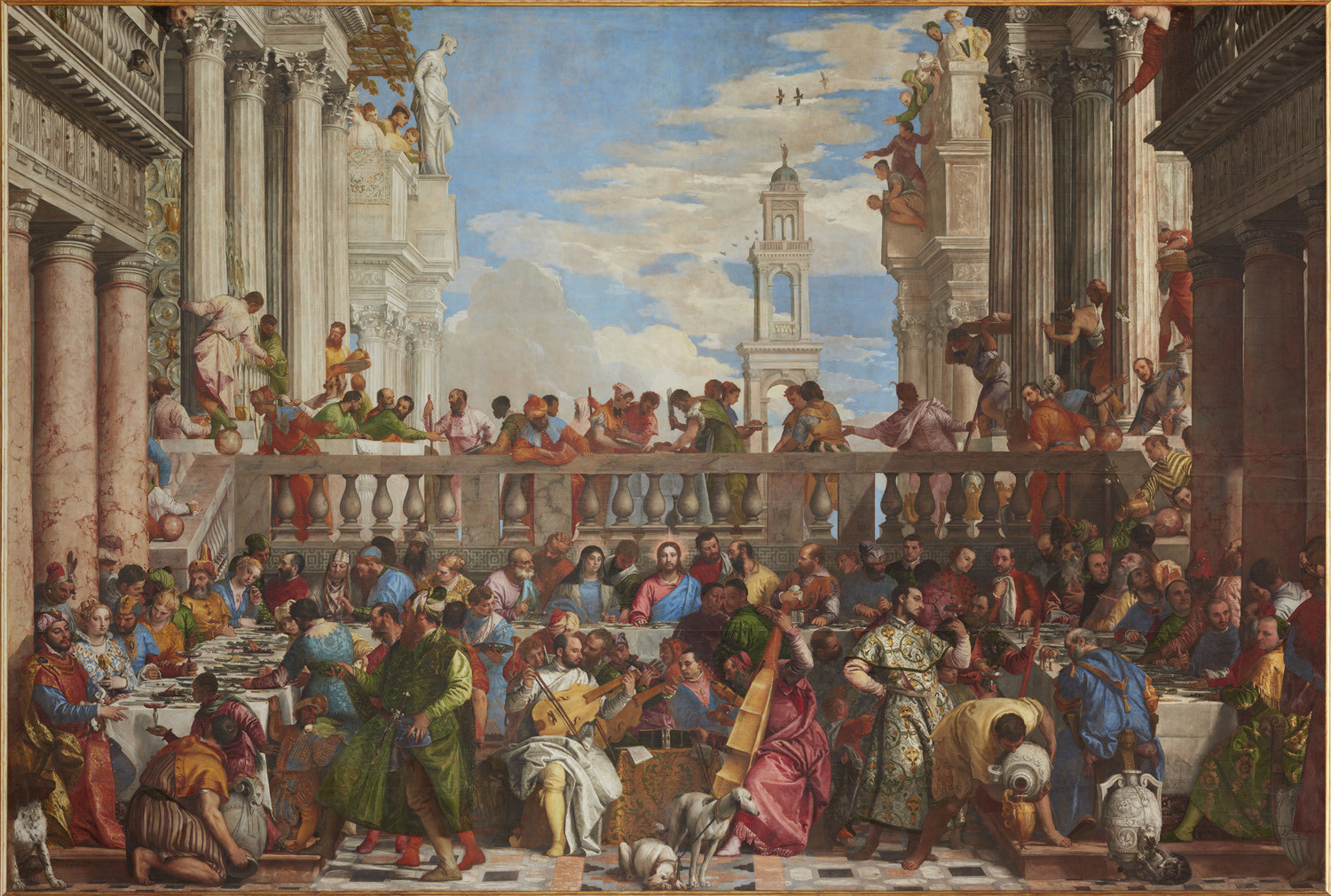 Veronese (Paolo Caliari), The Wedding Feast at Cana Room 711 (Salle des États), Denon wing, Level 1
Veronese (Paolo Caliari), The Wedding Feast at Cana Room 711 (Salle des États), Denon wing, Level 1
Beyond the Mona Lisa, the Salle des États is a treasure trove of Venetian Renaissance painting. Masters like Titian, Tintoretto, and Veronese shared a passion for vibrant and luminous colors. Veronese’s monumental Wedding Feast at Cana, a colossal canvas, directly faces the Mona Lisa, dominating the opposite wall. Around the room, visitors can admire other iconic works, including Titian’s Pastoral Concert and Man with a Glove, Tintoretto’s dynamic sketch for The Coronation of the Virgin (also known as Paradise), and exquisite portraits like Veronese’s Portrait of a Venetian Woman, nicknamed La Bella Nani. This collection represents an explosion of light and color, reflecting the exceptional talent of Venetian Renaissance artists.
When seeking “where is Mona Lisa?”, remember that her home in the Salle des États is not just about one painting. It’s an immersive experience into the world of Venetian art and a journey through history within the walls of the Louvre. While the Mona Lisa undoubtedly draws crowds, take the time to explore the other masterpieces within this magnificent room and appreciate the rich artistic heritage it holds.
Venetian Painting Masterpieces Await
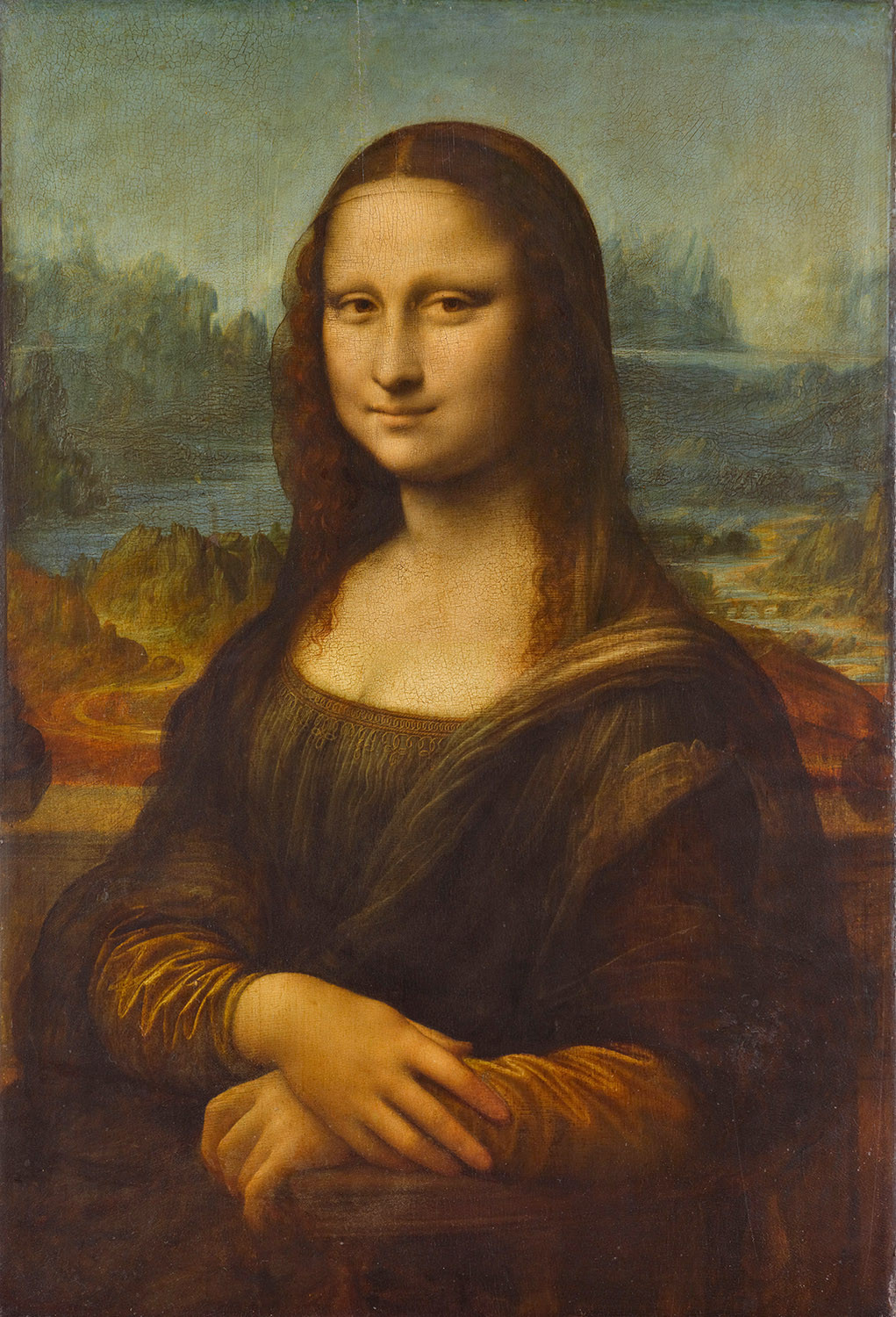 Leonardo da Vinci, Portrait of Lisa Gherardini, Wife of Francesco del Giocondo, known as the Mona LisaLeonardo da Vinci, Portrait of Lisa Gherardini, Wife of Francesco del Giocondo, known as the Mona Lisa
Leonardo da Vinci, Portrait of Lisa Gherardini, Wife of Francesco del Giocondo, known as the Mona LisaLeonardo da Vinci, Portrait of Lisa Gherardini, Wife of Francesco del Giocondo, known as the Mona Lisa Veronese (Paolo Caliari), The Wedding Feast at Cana Room 711 (Salle des États), Denon wing, Level 1Veronese (Paolo Caliari), The Wedding Feast at Cana
Veronese (Paolo Caliari), The Wedding Feast at Cana Room 711 (Salle des États), Denon wing, Level 1Veronese (Paolo Caliari), The Wedding Feast at Cana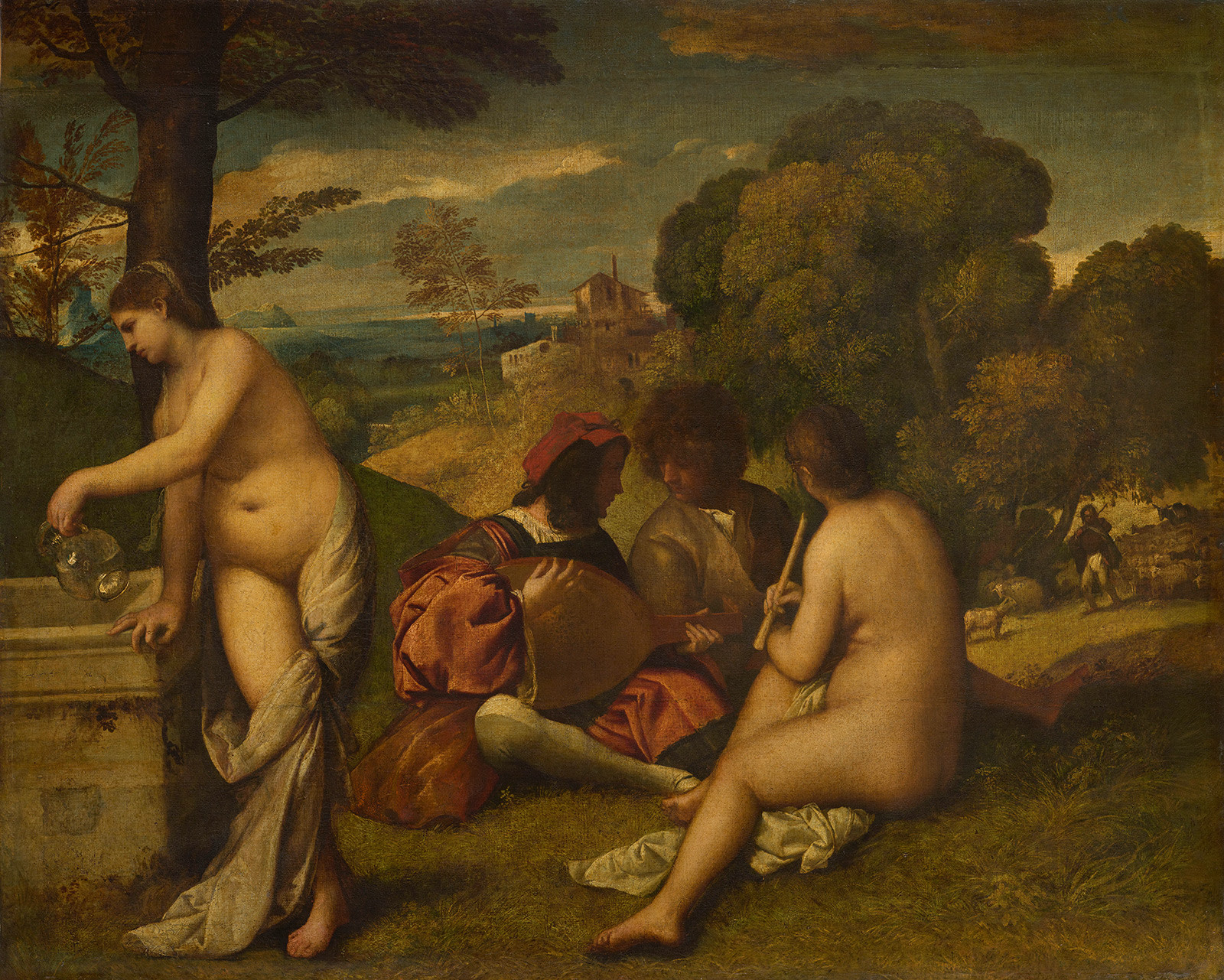 Titian (Tiziano Vecellio), The Pastoral ConcertTitian (Tiziano Vecellio), The Pastoral Concert
Titian (Tiziano Vecellio), The Pastoral ConcertTitian (Tiziano Vecellio), The Pastoral Concert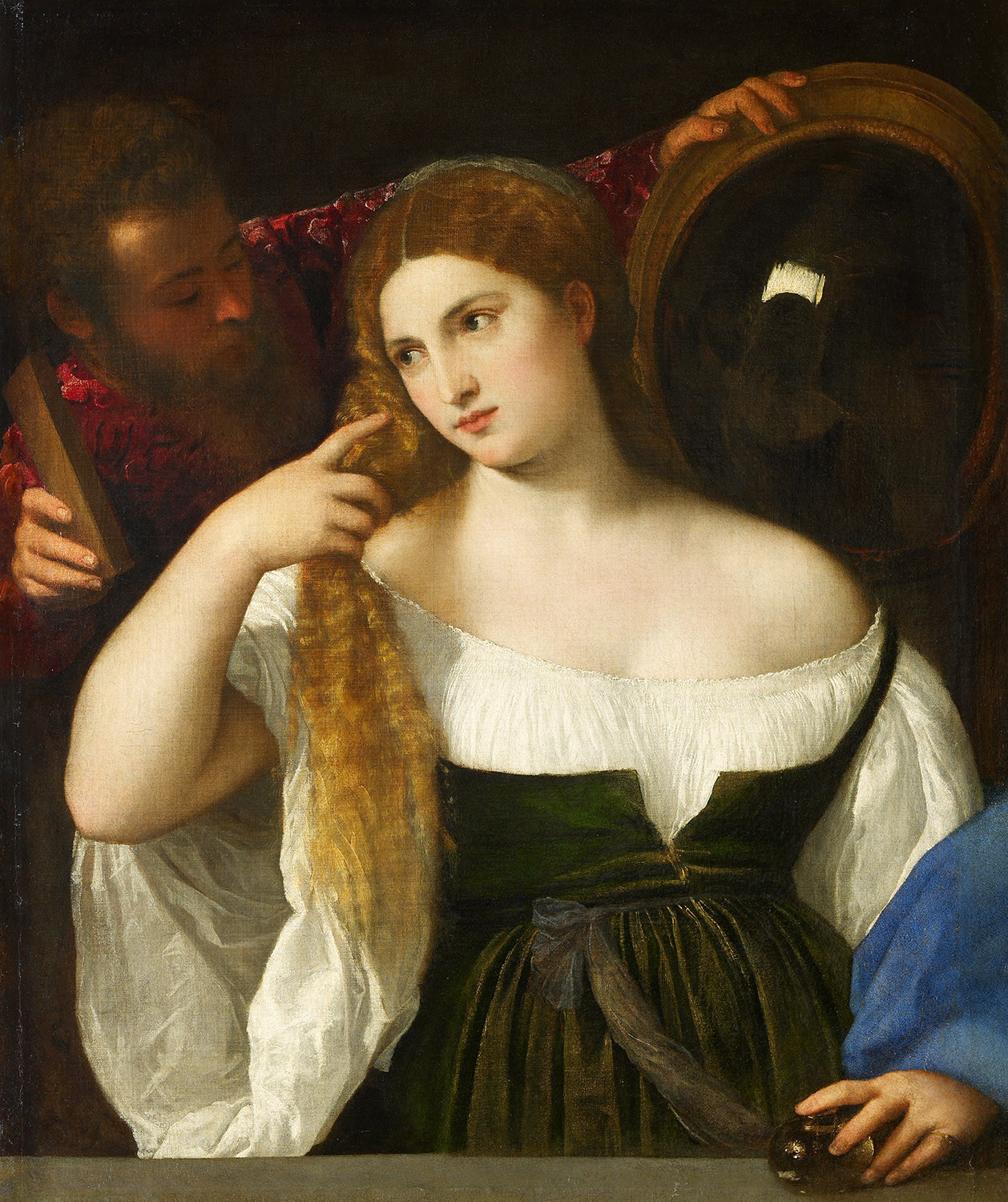 Titian (Tiziano Vecellio), Woman with a MirrorTitian (Tiziano Vecellio), Woman with a Mirror
Titian (Tiziano Vecellio), Woman with a MirrorTitian (Tiziano Vecellio), Woman with a Mirror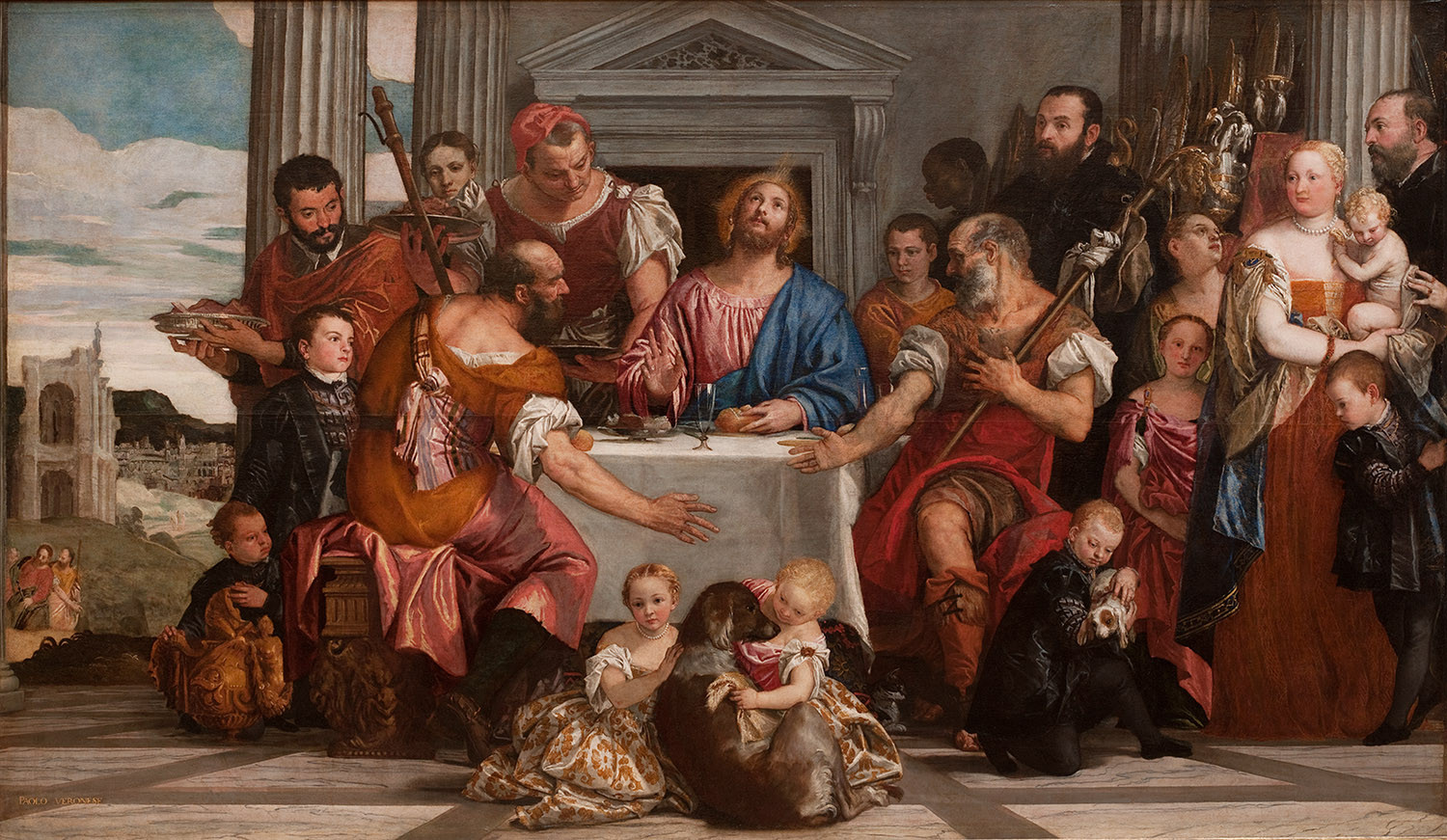 Veronese (Paolo Caliari), Supper at EmmausVeronese (Paolo Caliari), Supper at Emmaus
Veronese (Paolo Caliari), Supper at EmmausVeronese (Paolo Caliari), Supper at Emmaus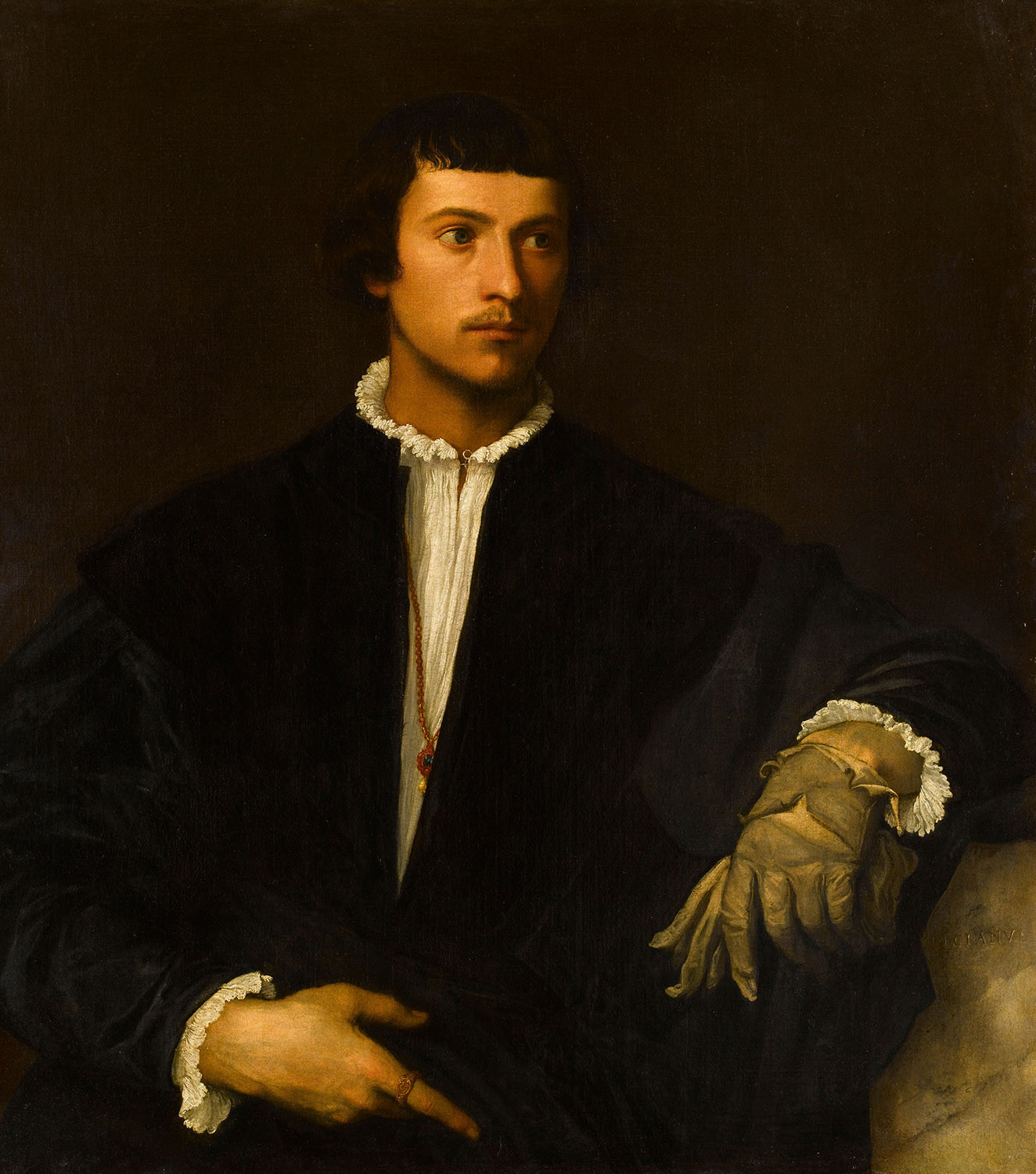 Titian (Tiziano Vecellio), Man with a GloveTitian (Tiziano Vecellio), Man with a Glove
Titian (Tiziano Vecellio), Man with a GloveTitian (Tiziano Vecellio), Man with a Glove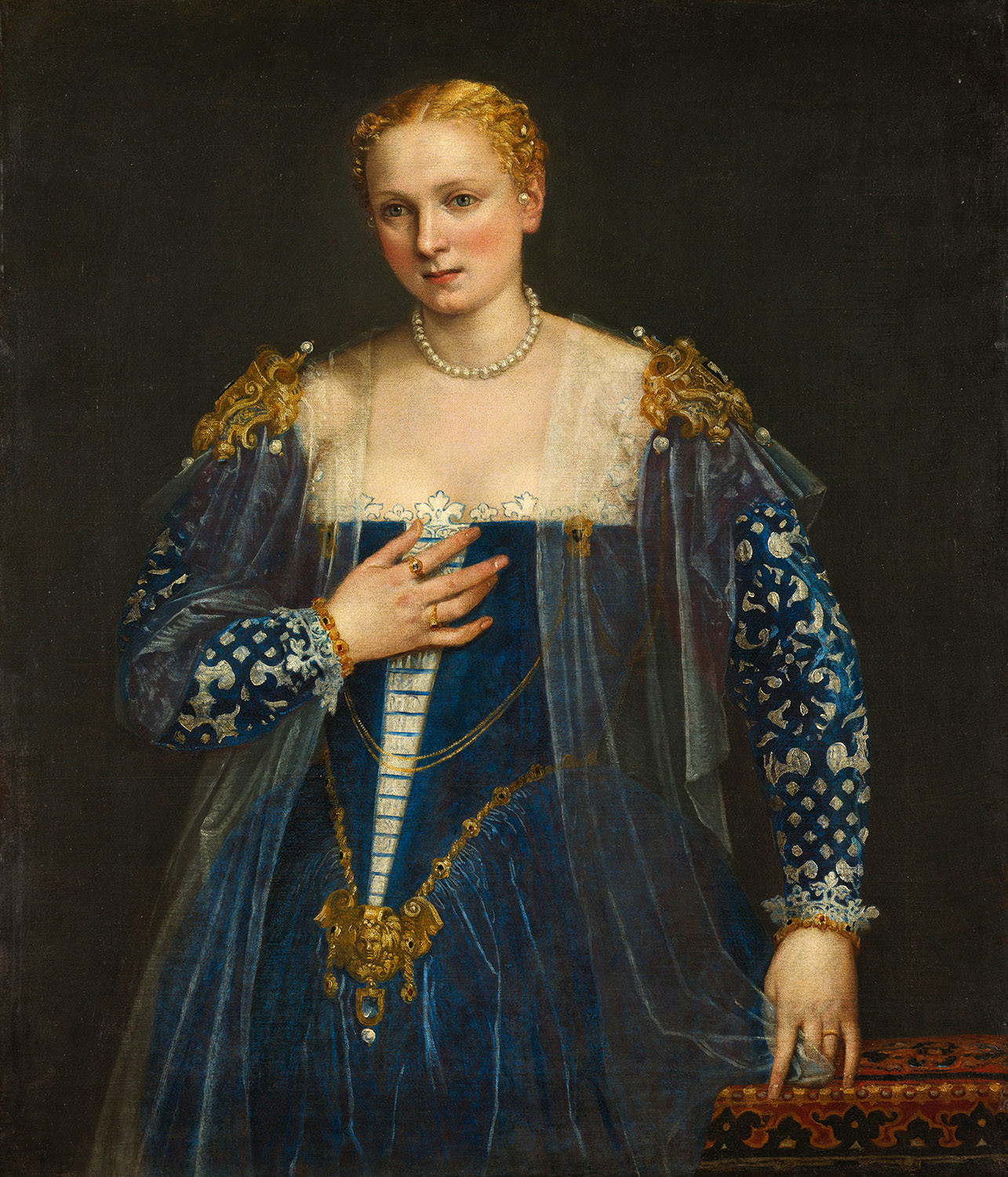 Veronese (Paolo Caliari), Portrait of a Venetian Woman, known as La Bella NaniVeronese (Paolo Caliari), Portrait of a Venetian Woman, known as La Bella Nani
Veronese (Paolo Caliari), Portrait of a Venetian Woman, known as La Bella NaniVeronese (Paolo Caliari), Portrait of a Venetian Woman, known as La Bella Nani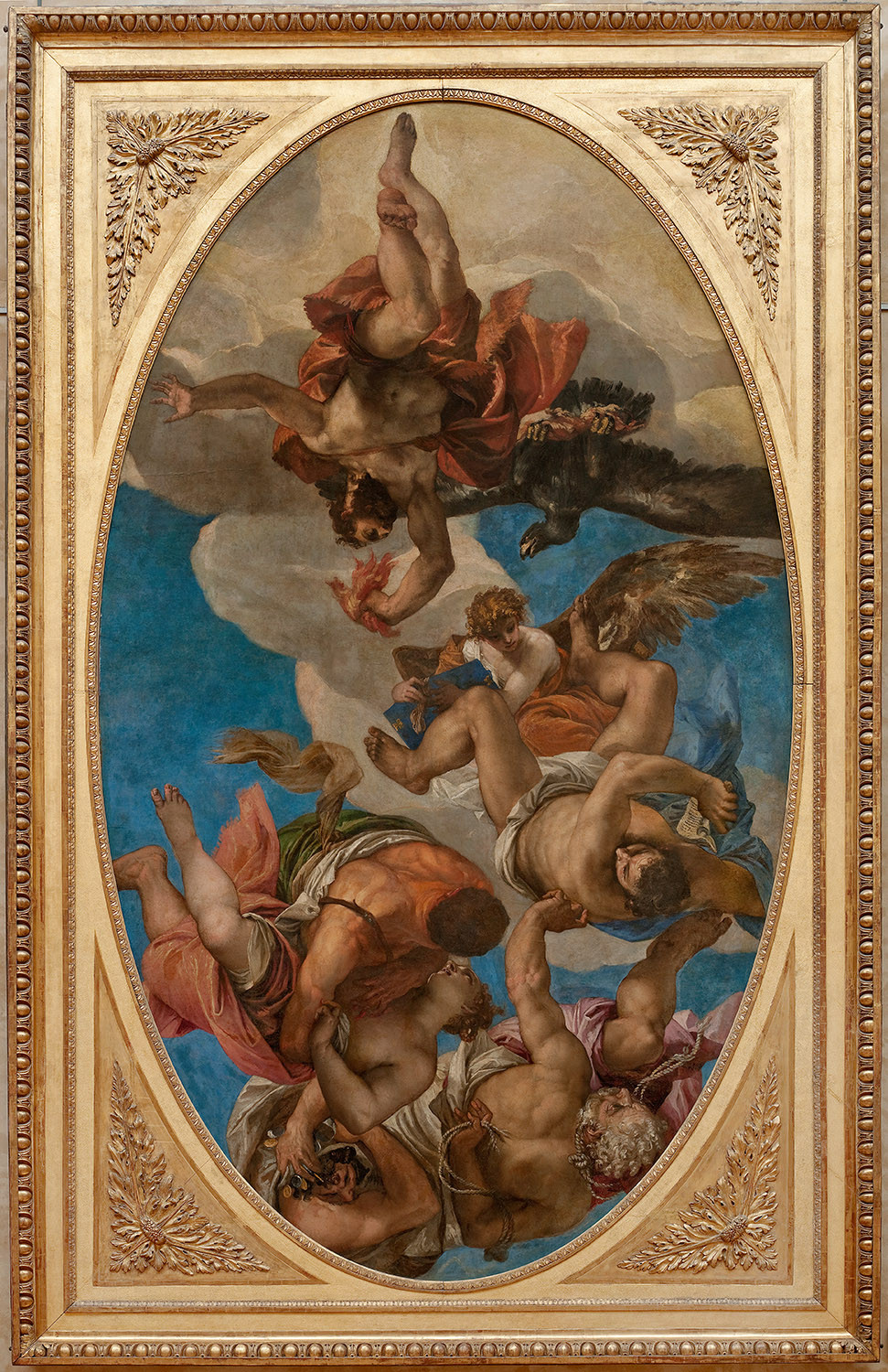 Veronese (Paolo Caliari), Jupiter Hurling Thunderbolts at the VicesVeronese (Paolo Caliari), Jupiter Hurling Thunderbolts at the Vices
Veronese (Paolo Caliari), Jupiter Hurling Thunderbolts at the VicesVeronese (Paolo Caliari), Jupiter Hurling Thunderbolts at the Vices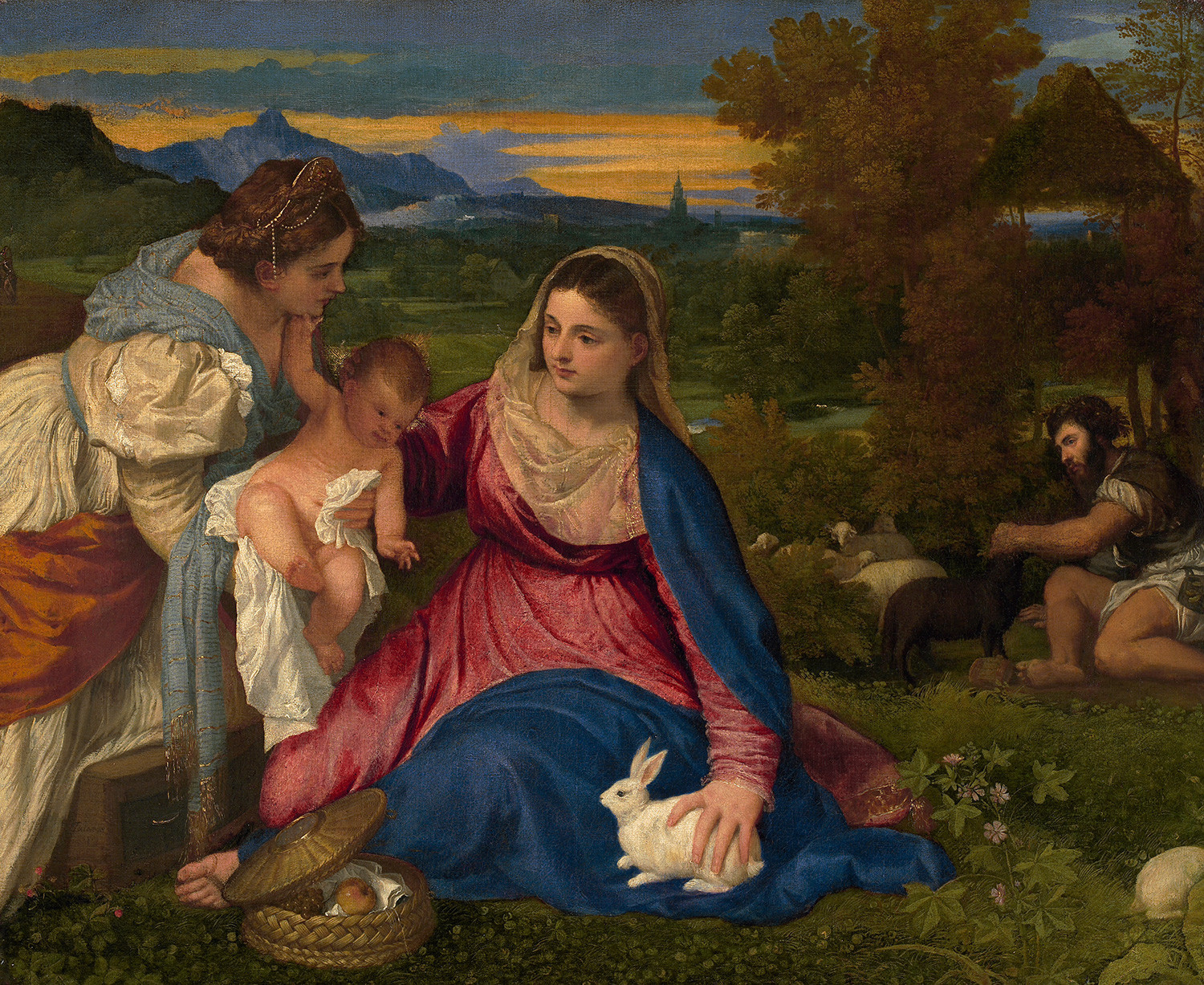 Titian (Tiziano Vecellio), The Virgin and Child with Saint Catherine and a Shepherd, known as The Madonna of the RabbitTitian (Tiziano Vecellio), The Virgin and Child with Saint Catherine and a Shepherd, known as The Madonna of the Rabbit
Titian (Tiziano Vecellio), The Virgin and Child with Saint Catherine and a Shepherd, known as The Madonna of the RabbitTitian (Tiziano Vecellio), The Virgin and Child with Saint Catherine and a Shepherd, known as The Madonna of the Rabbit-
Tintoretto (Jacopo Robusti), The Coronation of the Virgin, known as Paradise
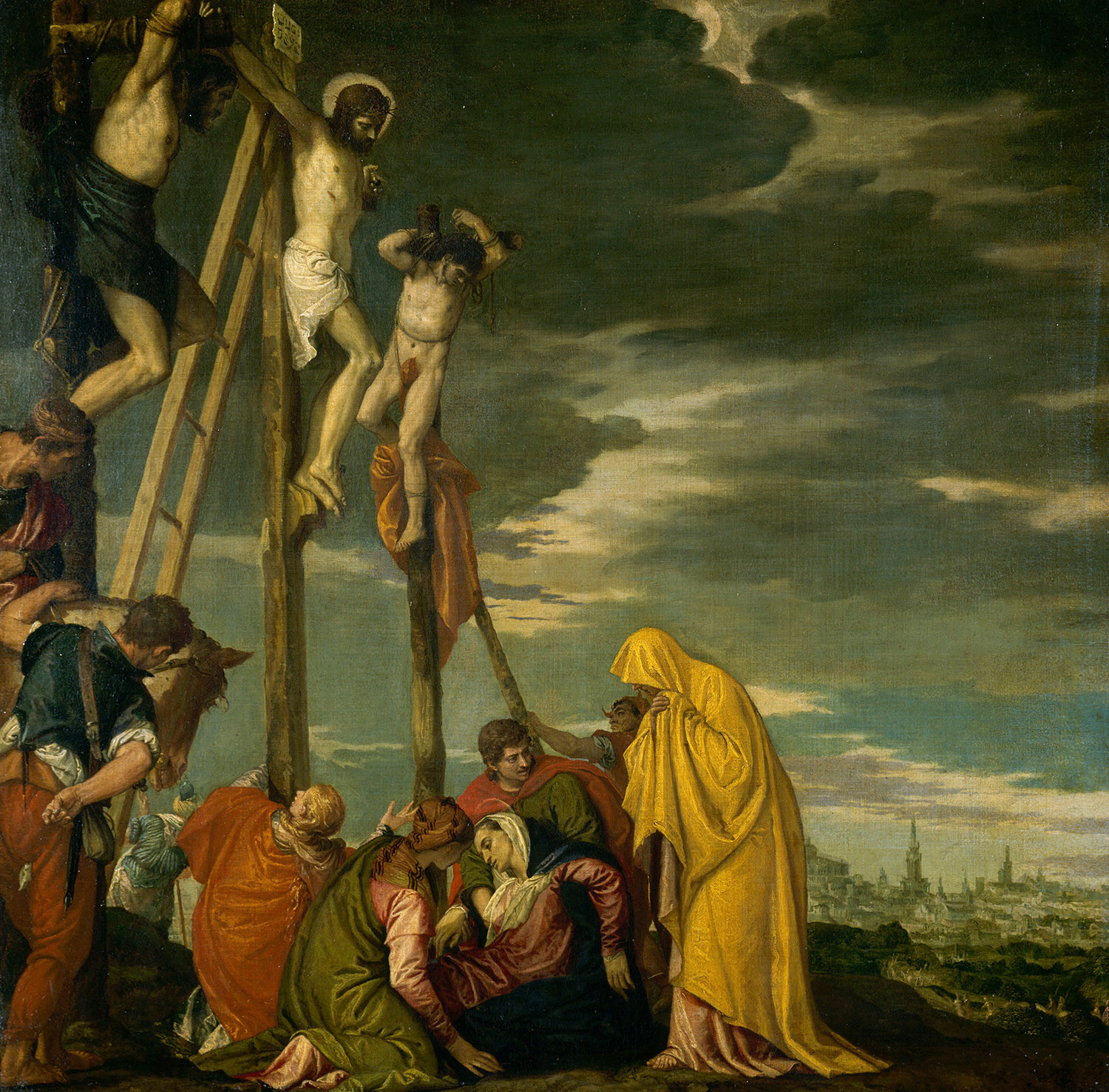 Veronese (Paolo Caliari), The CrucifixionVeronese (Paolo Caliari), The Crucifixion
Veronese (Paolo Caliari), The CrucifixionVeronese (Paolo Caliari), The Crucifixion
